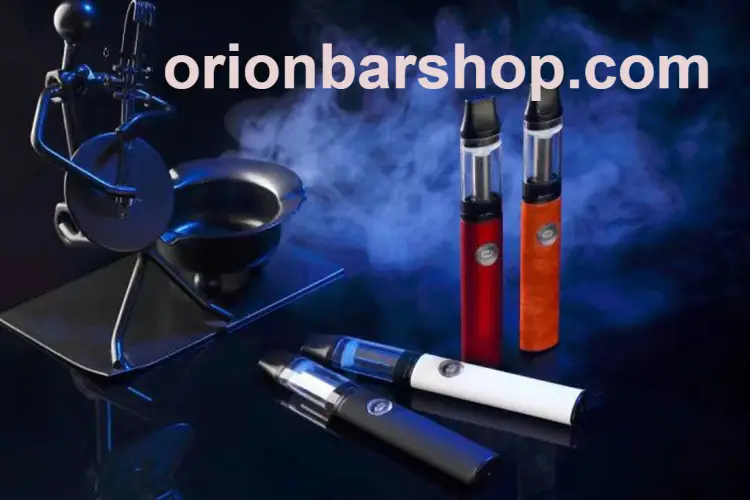The Shift from Channel-Based to User-Centric Distribution in the Global Vape Market
As the global vape market continues to expand rapidly, competition in overseas markets is becoming fiercer by the day. Traditional marketing models dominated by channel-based distribution are facing increasing challenges, while a shift towards user-centric distribution has emerged as the key to sustainable growth for vape companies. This article will explore the necessity of transitioning from channel-based to user-centric distribution in the global vape market and provide strategic insights for companies seeking to adapt.
Current State of Channel-Based Distribution Models
In the past, vape companies mainly relied on traditional distribution channels, such as traders and agents, to push their products into the market. These companies typically focused on building strong relationships with distributors through personalized service, pricing strategies, and loyalty incentives to boost product sales.
However, this model has its flaws. The multiple layers of the distribution chain often lead to inflated prices, making products less affordable for consumers. Additionally, there is a lack of direct communication between businesses and end-users, hindering the ability to collect accurate user feedback or respond quickly to market demands. This weakens customer loyalty and brand engagement. Moreover, the over-dependence on distribution channels exposes companies to the risks of price negotiations and unstable supply chains.
Why the Shift to User-Centric Distribution is Necessary
Meeting Personalized Customer Demands
As consumer awareness of vaping products grows, so does the demand for personalized, tailored vaping experiences. Consumers increasingly want to engage with manufacturers directly to have a say in the products they use. By shifting to a user-centric distribution model, vape companies can better understand user preferences, ensuring they offer products that cater to specific tastes and needs.
Enhancing User Experience and Loyalty
Building a direct relationship with users allows companies to provide superior pre-sale, during-sale, and after-sale services. A streamlined experience boosts customer satisfaction and fosters long-term loyalty. Loyal customers are more likely to make repeat purchases, generate positive word-of-mouth, and promote the brand within their networks.
In highly competitive overseas markets, adapting to a user-centric distribution model enables companies to gain more control over market dynamics. By staying closer to users, companies can swiftly adjust product features and marketing strategies based on real-time data, allowing for faster market response and a more agile competitive edge.

Current Trends in the Shift to User-Centric Distribution
The Rise of E-commerce Platforms
More and more vape companies are leveraging their own e-commerce platforms or third-party online marketplaces to sell directly to consumers. These platforms provide a convenient shopping experience that breaks geographical barriers and extends the reach of vape brands. Additionally, e-commerce platforms offer valuable user data that can be used for targeted marketing campaigns, allowing companies to personalize their approach and boost sales.
Social Media Marketing
Social media has become a vital channel for communication between vape companies and users. Through platforms like Instagram, TikTok, and YouTube, brands can share product information, tutorials, and user-generated content to engage with potential customers. Social media not only enhances brand visibility but also builds a sense of community and trust among users, reinforcing the brand's presence.
Building Brand-Specific Stores
Some vape companies are opening physical brand stores in key overseas markets, where they can directly sell products to customers. These stores serve as a venue for product demonstrations and consultations, offering expert advice and after-sales support. Such direct engagement helps improve the overall user experience and strengthens the brand's reputation.
Private Traffic Management
Vape companies are also building private traffic ecosystems, utilizing apps or online communities to manage customer relationships. Through exclusive offers, new product launches, and loyalty programs, companies can encourage repeat purchases and foster a sense of belonging among users.
Challenges in Transitioning to a User-Centric Model
Regulatory and Policy Constraints
Vape companies must navigate varying regulations across different countries. While some regions impose strict controls on the sale, promotion, and use of vaping products, others have more relaxed policies. These regulatory hurdles make it more difficult for companies to adopt a user-centric approach. To succeed, companies must closely follow local laws and adapt their marketing strategies accordingly.
Building User Trust
A significant challenge in transitioning to a user-centric model is establishing trust with consumers. The vaping industry has faced some negative press and public controversies, which has led some users to be skeptical about vape products. For companies to succeed in this shift, they need to focus on building trust by offering high-quality products, transparent marketing, and top-notch customer service.
Data Security and Privacy Concerns
As companies collect and analyze vast amounts of user data, privacy and security have become major concerns. It's essential for companies to invest in secure data management systems to protect users’ personal information and avoid any breaches that could harm their reputation.
Strategic Recommendations for User-Centric Distribution
Enhanced User Research
To make the shift from traditional channel-based distribution to a user-centric model, vape companies must prioritize detailed user research. Understanding the local and global preferences of consumers can help businesses fine-tune product offerings and better tailor marketing campaigns. Companies should invest in ongoing market research to track changes in user behavior, emerging trends, and shifting needs. This could involve engaging with their audience through direct surveys, creating focus groups, or using data analytics tools to understand purchasing patterns. By gaining a deeper insight into what users are looking for, vape companies can innovate and produce customized flavors, devices, and services that specifically cater to these desires. Additionally, personalized approaches to marketing—such as targeting ads based on user data—will further build strong customer relationships and brand loyalty. The more companies understand their customers, the better they can meet expectations, leading to higher satisfaction and long-term success.
Optimizing the User Experience
Optimizing the entire user experience—from browsing and purchasing to post-purchase interactions—is a key factor in building brand loyalty. It’s not just about having a great product; it’s about making sure users feel valued and taken care of at every stage of their journey with the brand. Streamlined e-commerce platforms, user-friendly interfaces, fast and reliable shipping, and exceptional customer support are all essential components of the experience. This extends beyond just the technical aspects of the purchase and includes the aesthetic appeal of the product itself. Packaging that’s easy to open and visually appealing, as well as clear, helpful instructions on how to use the device, can make a significant difference in user satisfaction. Additionally, proactive customer service—whether that’s troubleshooting, offering tutorials, or answering questions quickly—can go a long way in fostering a positive relationship with the customer. Companies that consistently deliver high-quality products alongside an effortless, enjoyable experience are far more likely to build a community of loyal users who will continue to support the brand and recommend it to others.
Innovative Marketing Strategies
In today’s competitive vaping market, innovation in marketing is a crucial part of standing out. Vape companies should explore creative ways to connect with their audience beyond just selling products. While e-commerce platforms and social media marketing are effective tools, diversifying marketing efforts can create more engaging and lasting impressions. Hosting local events, such as product demonstrations or vape-related educational seminars, can allow potential customers to try products firsthand and interact with the brand in person. Collaborating with social media influencers and content creators who resonate with the target demographic can also help build credibility and extend brand reach. Pop-up shops and limited-time experiences can generate excitement and a sense of exclusivity, which helps keep the brand top-of-mind. Creating partnerships with lifestyle brands or even charity initiatives can further expand a company’s reputation, as consumers today are looking for brands that align with their values. By constantly rethinking how to engage with the community, vape brands can ensure they are meeting their users where they are and enhancing the overall brand experience.
Building User Communities
Incorporating a community-driven approach can significantly boost a vape company’s long-term success. When users feel a sense of belonging and connection to a brand, they are more likely to remain loyal, participate in conversations, and become ambassadors of the brand. This can be achieved by creating online forums, social media groups, or user-created content platforms where customers can share their experiences, offer product reviews, and give feedback. These communities act as invaluable sources of data for the company, offering direct insights into user preferences and helping to inform product development and improvements. Beyond feedback, communities also allow users to discuss their passion for vaping, share personal stories, and connect with others who have similar interests. Offering exclusive promotions, sneak peeks at upcoming products, or early access to new flavors for community members can also encourage engagement and foster stronger bonds with the brand. By cultivating an active, engaged community, vape companies can build trust and authenticity, creating a loyal user base that actively supports the brand's growth.
Strengthening Compliance
As the vaping industry continues to grow, companies must stay ahead of changing regulatory environments to ensure their transition to a user-centric distribution model is successful. Regulations surrounding product sales, marketing, and usage vary significantly by country, and failing to comply can result in fines, damaged reputations, or even legal action. To avoid this, vape companies should actively monitor regulatory shifts in each of their markets and ensure they are fully compliant with local laws. This may involve adjusting marketing materials, packaging, or even product formulations to adhere to new rules. Beyond just following the law, companies should focus on transparency and building trust with their customers. If a company takes the time to explain how it’s meeting regulatory requirements and ensuring user safety, it can bolster its credibility with both current and prospective customers. Strong compliance not only avoids legal risks but also positions the brand as responsible and trustworthy, which is especially important as consumer trust in the vaping industry remains a key concern.
Conclusion
In conclusion, the shift from a channel-based to a user-centric distribution model represents a necessary evolution for vape companies looking to stay competitive in the global market. This transition goes beyond just changing sales strategies—it reflects a broader, more profound transformation in how companies view their relationship with consumers. Instead of simply pushing products through a distribution chain, vape businesses are increasingly focusing on building long-term relationships with customers by offering personalized experiences, creating engaging brand ecosystems, and ensuring their compliance with local regulations. The key to thriving in this changing landscape is adopting a "product-service-community" approach, which integrates hardware, consumables, and user-centric services to create a seamless and satisfying user experience. By emphasizing local adaptability, prioritizing customer satisfaction, and staying on top of industry regulations, vape companies can set themselves up for success in an increasingly competitive and dynamic global market.If you are looking for high quality vapes, we recommend you try the Lost Vape Orion Bar 50000 and the Lost Vape Lightrise Tb 18k.

